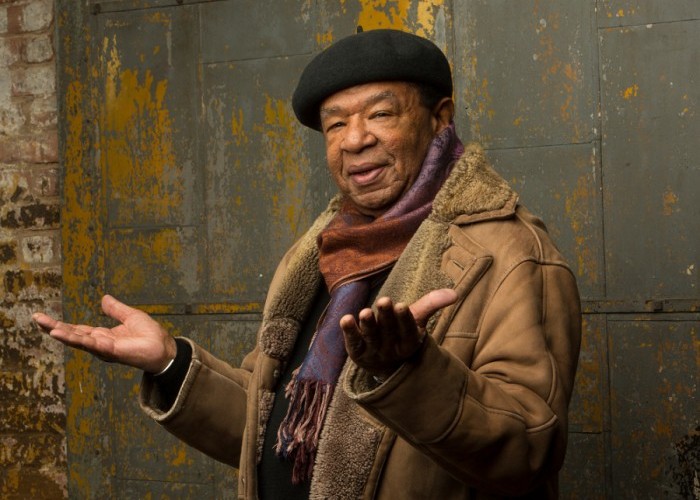Jun 3, 2025 11:25 AM
In Memoriam: Al Foster, 1943–2025
Al Foster, a drummer regarded for his fluency across the bebop, post-bop and funk/fusion lineages of jazz, died May 28…

Buster Williams’ new album is titled Audacity.
(Photo: Jimmy Katz)On hiatus from his long-running gig with singer Nancy Wilson, bassist Buster Williams, then 25, suddenly got an offer to tour the Northwest with Miles Davis. He took the job, of course, and soon found himself swept up in the whirlwind of invention that Davis, Wayne Shorter, Herbie Hancock and Tony Williams were creating onstage in 1967.
“These guys had already created a direction of their own,” Williams recently said at the Manhattan club Smoke. “I had to step into that and grasp it very quickly.”
But when the trumpeter asked him to stay with the quintet after Williams’ five-week hiatus had ended, he declined. The decision, based on the comparative rates of pay, is one that the bassist thinks about to this day.
“If I have any regrets, that might be the only one—that I didn’t actually stay with Miles,” he said. “But I don’t have a real regret about that, either. It’s on my résumé, and I learned a lot from Miles when I was with him.”
Two years after the Davis tour, Williams joined Hancock’s groundbreaking group Mwandishi, and in 1975, he released his first album as a leader, Pinnacle.
At 76, Williams might no longer be roiling the musical landscape in quite the same way. But his writing has, if anything, grown more personal. His sound—brilliantly clear, resonant and vibrant—is as inimitable as ever on Williams’ new quartet album, Audacity (Smoke Sessions).
Williams’ originals reflect a spirit nurtured by decades of Buddhist chanting. “Ariana Anai” and “Briana,” each written for a granddaughter, glow with familial love, and the episodic “Triumph” burns with an inner intensity.
“It’s got an effect on me when I play it and think about its origins,” he said about “Triumph.” “I don’t know where it came from, but it’s expressing something that lives inside of me that exists in hope.”
Driven by that sense of hope, Audacity is the latest stop on a journey in which the next stop always is unclear. The only certainty, Williams declared, is that “the next one will be better.”
The endless refining of Williams’ art was a major takeaway for filmmaker Adam Kahan, who has been working on Bass To Infinity, a documentary about the bassist, for about two years.
“There’s no question he’ll do that till he dies,” Kahan said. “There’s no other option.”
Williams, while complimenting Kahan’s work, put it another way: “I don’t want to finish this life after necessarily completing my mission without having started something new. I’d like to be on the upswing.” DB

Foster was truly a drummer to the stars, including Miles Davis, Sonny Rollins and Joe Henderson.
Jun 3, 2025 11:25 AM
Al Foster, a drummer regarded for his fluency across the bebop, post-bop and funk/fusion lineages of jazz, died May 28…

“Branford’s playing has steadily improved,” says younger brother Wynton Marsalis. “He’s just gotten more and more serious.”
May 20, 2025 11:58 AM
Branford Marsalis was on the road again. Coffee cup in hand, the saxophonist — sporting a gray hoodie and a look of…

“What did I want more of when I was this age?” Sasha Berliner asks when she’s in her teaching mode.
May 13, 2025 12:39 PM
Part of the jazz vibraphone conversation since her late teens, Sasha Berliner has long come across as a fully formed…

Roscoe Mitchell will receive a Lifetime Achievement award at this year’s Vision Festival.
May 27, 2025 6:21 PM
Arts for Art has announced the full lineup for the 2025 Vision Festival, which will run June 2–7 at Roulette…

Benny Benack III and his quartet took the Midwest Jazz Collective’s route for a test run this spring.
Jun 3, 2025 10:31 AM
The time and labor required to tour is, for many musicians, daunting at best and prohibitive at worst. It’s hardly…